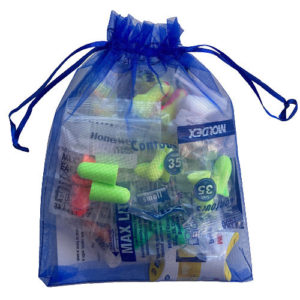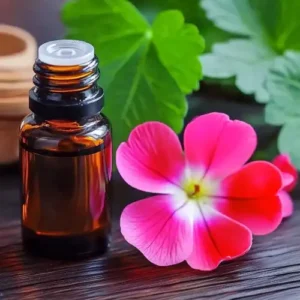Earplugs can certainly help prevent hearing loss, and no, not all earplugs distort sound quality. For example, Original Downbeats Earplugs or Alpine MusicSafe Pro Earplugs are just two of the many earplugs on the market now which are designed specifically to reduce hearing loss caused by excessively loud or consistent noise, without distorting sound quality.
We live in a noisy world, and there is no denying that. In both our work lives and private lives, we are exposed to noise levels that can seriously affect our hearing. And that’s why earplugs were invented; to prevent the devastating effects of loud, damaging noise.
Why We Use Earplugs
We use earplugs to not only reduce sound as it enters our ears, but also to prevent new hearing loss. While earplugs don’t entirely eliminate sound, a well-fitting earplug is capable of reducing sound by between 15 and 30 dB. If our ears are constantly exposed to loud noises, the inner ear nerve endings become damaged, and sometimes even killed. If the nerve endings die, the tragic result is permanent loss of hearing.
You may not be aware that just one single exposure to extremely loud noise can result in hearing loss to some degree, which well-fitting earplugs could have prevented. Unfortunately, hearing loss is not the only result of these types of loud noises. People may also experience a frustrating and annoying condition known as tinnitus. And the list of consequences goes on, with noise also causing heightened adrenaline and stress levels. The exposure to anxiety and stress on an ongoing basis can cause a number of health problems, like heart disease and elevated blood pressure. Sleep deprivation is another problem, which in itself can lead to immunosuppression and an elevated pulse. The use of simple earphones can even prevent minor health issues, like an upset stomach.
The History of Earplugs
The earplug has been around for a long time and is a simple and inexpensive solution to an age-old problem. Earplugs in ancient times would probably have been formed out of clay or wax, but the earplugs we know today were not developed until the mid-20th century. Ray and Cecelia Benner invented the silicone earplug in 1962, and this earplug was specifically designed for swimmers to stop water entering the ear canal, and possibly causing an infection. Ross Gardner invented the first foam earplugs 10 years later, saying the idea came to him from the foam lining in headphones.
The design and function of foam earplugs has basically stayed the same since that time, but the problem is that people are just not wearing them. Statistics supplied by the Hearing Industries Association show that noise-induced hearing damage and hearing loss is becoming much more widespread, with over 6 million people aged between 18 and 44 experiencing some form of hearing loss. In the United States, hearing loss is the third most common illness, following arthritis and heart disease. Sadly, a large portion of that hearing loss could have been avoided. These numbers are worrying, and awareness must be raised for this problem, with workable solutions being offered.
How Does Hearing Loss Occur?
When the hair cells inside our ears are permanently damaged, that’s when we experience hearing loss. This damage is caused by listening to loud noises for long periods of time. Sadly, when permanent damage is done to hearing loss, this can’t be undone, and while researchers are working to find a cure to resolve this, no cure is available today.
At What Level Is Noise Damaging to Our Hearing?
Noise exceeding 85 dB will damage your hearing; which is typically the noise level of a food processor or hairdryer. Music played at a concert will reach around 125 dB, which far exceeds the recommended limit.
What’s New in Earplugs?
Original DownBeats Earplugs hit the market last year are innovatively designed so they don’t protrude from the ear, which can be embarrassing for some people to wear at sport events, nightclubs, and so on. These were designed to be fashionable, yet not interfere with the listening experience. And, they had to have an affordable price-tag. Original DownBeats Earplugs can be purchased today for £15.99 a pair.
How Do Downbeats Acoustic Filters Work?
Traditional earplugs sacrifice sound quality, often producing a muffled sound. Engineers of the Dubs Acoustic Filters were able to reduce the volume, without altering the sound quality, by developing an innovative series of high-and-low-pass filters. Resting gently inside your ear, these earplugs essentially work as a volume control.
As you can see, this invention has moved us from inexpensive (and often ill-fitting) foam earplugs to mechanical ear filters. Perhaps now that hearing prevention can look very ‘cool’, more people will consider protecting their precious hearing.
Choosing the Right Earplugs
With so many different earplug options on the market, it can be confusing to know which ones to choose. The right earplugs will depend on your specific needs and the environment you’ll be using them in. Let’s look at some key factors to consider.
Noise Reduction Rating (NRR): This rating indicates how effective the earplugs are at reducing noise levels. The higher the NRR, the more noise they will block out. For very loud environments like construction sites or shooting ranges, you’ll want earplugs with an NRR of 30 or higher. For moderately loud places like concerts or nightclubs, an NRR around 20-25 is usually sufficient.
Fit and Comfort: Earplugs only work well if they fit properly and comfortably in your ear canals. Look for earplugs made of soft, flexible materials like foam or silicone that conform to your ear shape. Some come in different sizes to ensure a customized fit. Poorly fitting earplugs are not only ineffective, but can cause discomfort or even ear pain with extended wear.
Corded vs Uncorded: Corded earplugs have a thin cord or neck strap connecting them, making them harder to lose or drop out of your ears. This is a nice feature for active situations. However, the cords can get in the way for some people. Uncorded earplugs are simpler and more discreet.
Reusable vs Disposable: Foam earplugs are relatively inexpensive and disposable after one use. Silicone or plastic earplugs are reusable and last much longer, but require proper cleaning to stay hygienic. The reusable option is more eco-friendly long-term.
Sound Quality: For musicians, DJs, audio engineers and others who need to hear sound accurately, high-fidelity earplugs are a must. They reduce overall volume evenly across frequencies without muffling or distorting sound quality. Regular earplugs tend to muffle everything.
Proper Earplug Usage
Even the best earplugs won’t protect your hearing if you don’t use them correctly. Here are some tips:
- Roll the foam earplugs into a tight cylinder before inserting into your ear canals. Allow them to expand and create a seal.
- For reusable earplugs, twist them as you gently push them into your ears to get a snug fit.
- Don’t just let earplugs loosely dangle in your ear openings as this defeats the purpose.
- Keep earplugs clean and replace disposable ones regularly.
The Value of Earplug Sample Packs
Have you ever wondered which earplugs might work best for you? With so many options out there, it’s tough to know where to start. That’s where Zoom Health’s earplug sample packs come in handy. They take the guesswork out of finding your perfect fit by letting you try a variety of top-selling earplugs before committing to a full pack.
Men’s and Women’s Earplug Packs
Zoom Health offers two distinct earplug sample packs – one tailored for men and another for women. Why the distinction? Simple – ear canal sizes can vary between genders. The men’s pack contains earplugs better suited for larger ear canals, while the women’s focuses on smaller, more comfortable options.
The Men’s Pack
This robust collection features 15 different earplug styles, including 13 varieties of foam earplugs from trusted brands like 3M, Moldex, and Howard Leight. You’ll find tapered earplugs for easy insertion, extra-soft low-pressure options, and highly effective noise-blockers reducing sounds by up to 33 dB. The pack also includes silicone and wax earplugs, giving you a comprehensive sampling.
The Women’s Assortment
Designed with smaller ear canals in mind, the women’s sample pack offers 15 earplug choices as well. In addition to top foam earplugs like 3M’s EARsoft classics, you’ll discover specialty feminine styles like Mack’s bold pink “Dreamgirl” earplugs. The pack also showcases petite foam picks from Moldex’s Contours and Mellows lines for a cosy, just-right fit.
Why Try a Sample Pack?
Think about it – you wouldn’t buy a new pair of shoes without trying them on first, right? The same logic applies to earplugs. With sample packs, you can find the ideal earplug shape, size, and material for supreme comfort and noise reduction tailored to your unique needs.
Perhaps you’ll love the snug, noise-canceling seal of foam earplugs. Or maybe the reusable silicone or moldable wax varieties will become your go-to’s. Either way, you’ll save money by avoiding hit-or-miss full pack purchases. Plus, with easy fit instructions included, you’ll learn proper earplug insertion for maximum effectiveness.
So don’t resign yourself to restless nights or annoying ambient sounds any longer. Invest in one of Zoom Health’s affordable sample packs today, and discover the earplug euphoria of blissful silence and serenity!
Photo by Anthony Cunningham for Zoom Health
Zoom Health is a leading UK supplier of Home Health Tests and Earplugs






